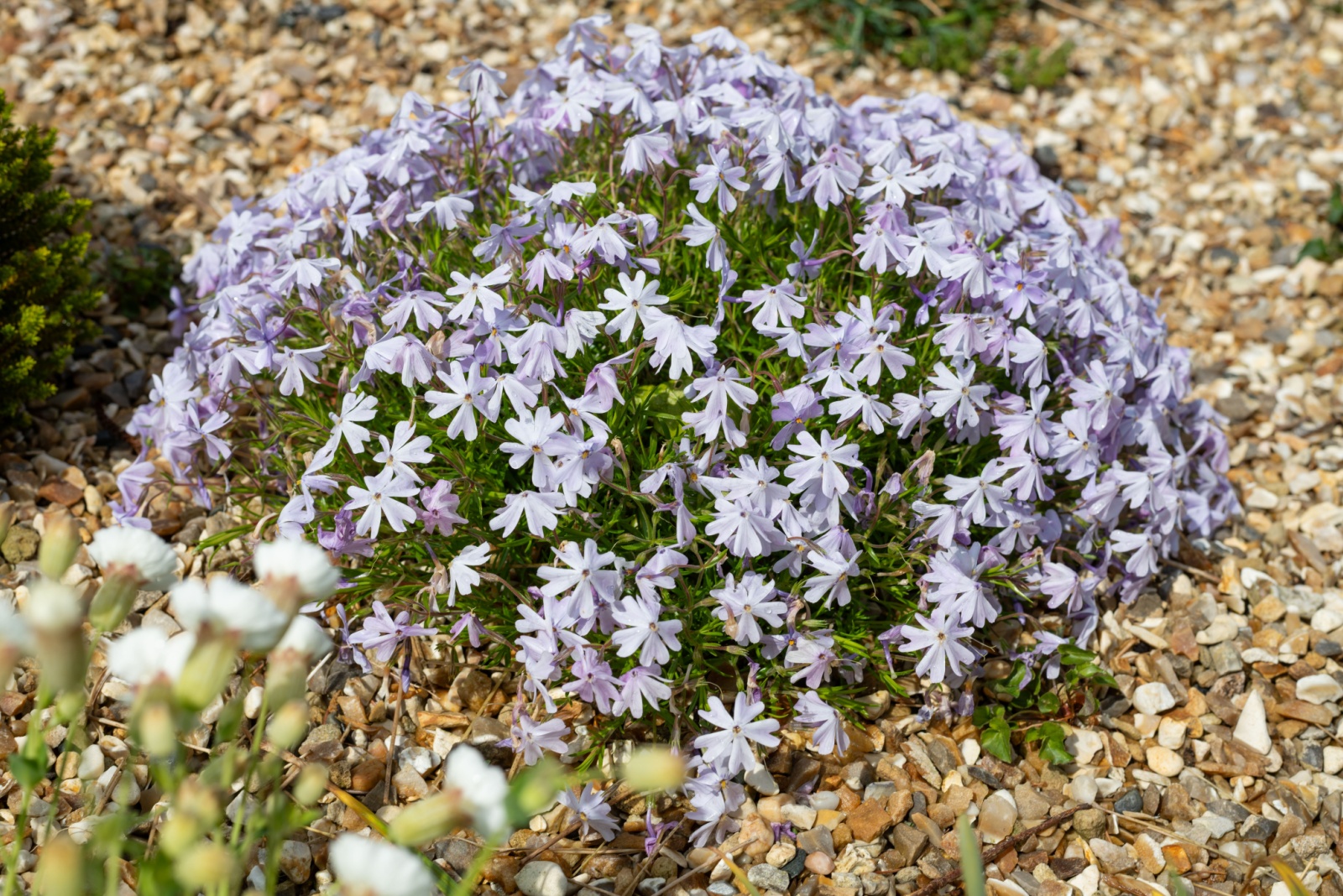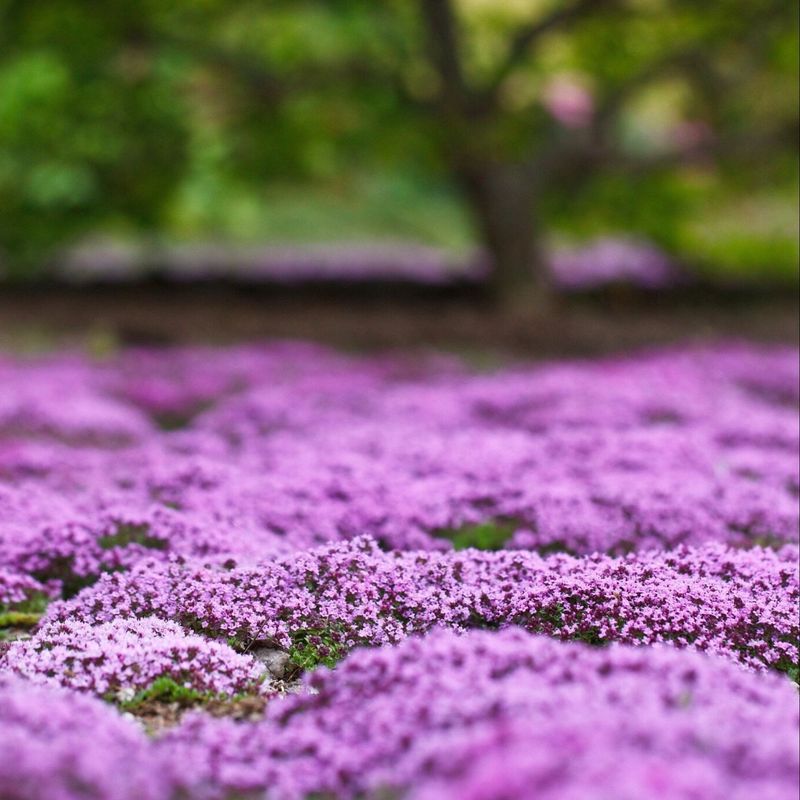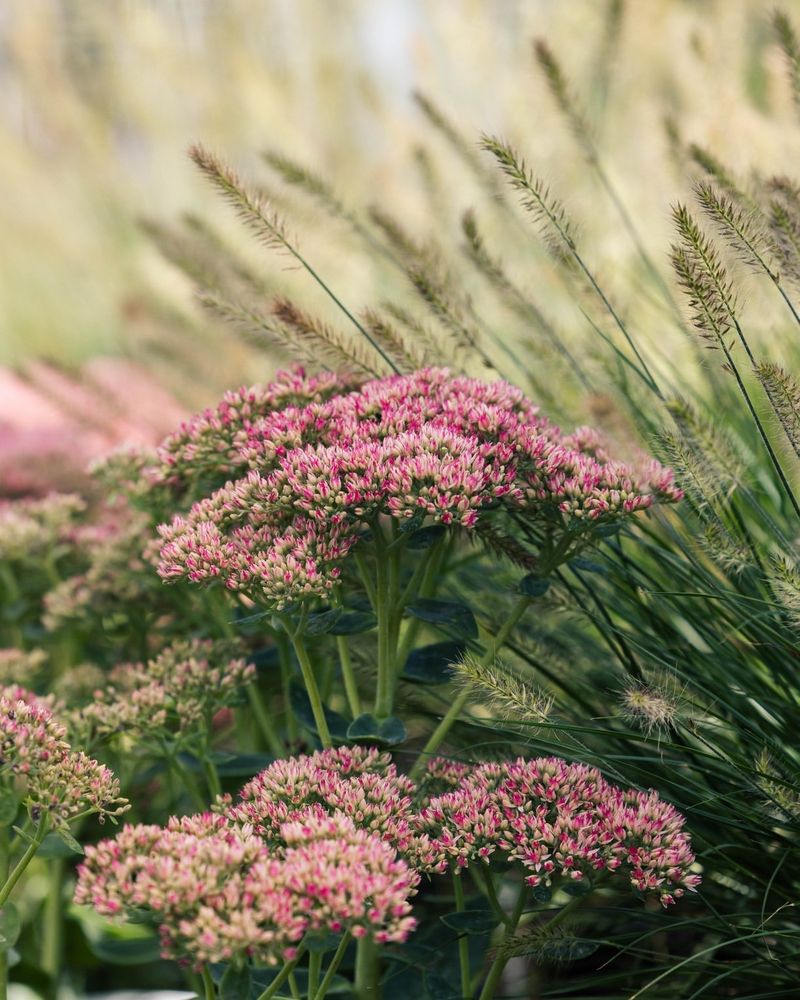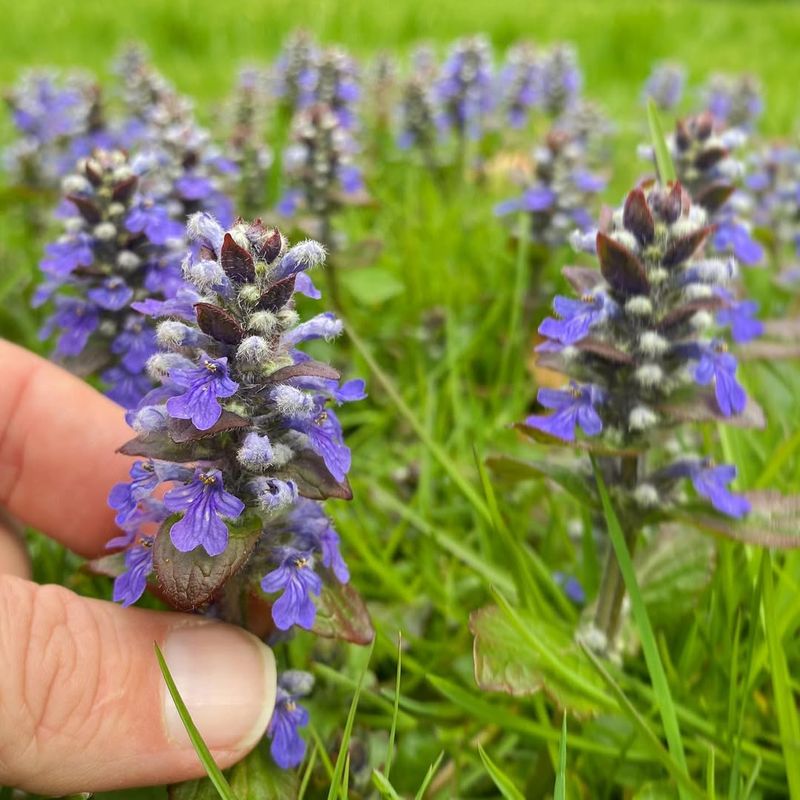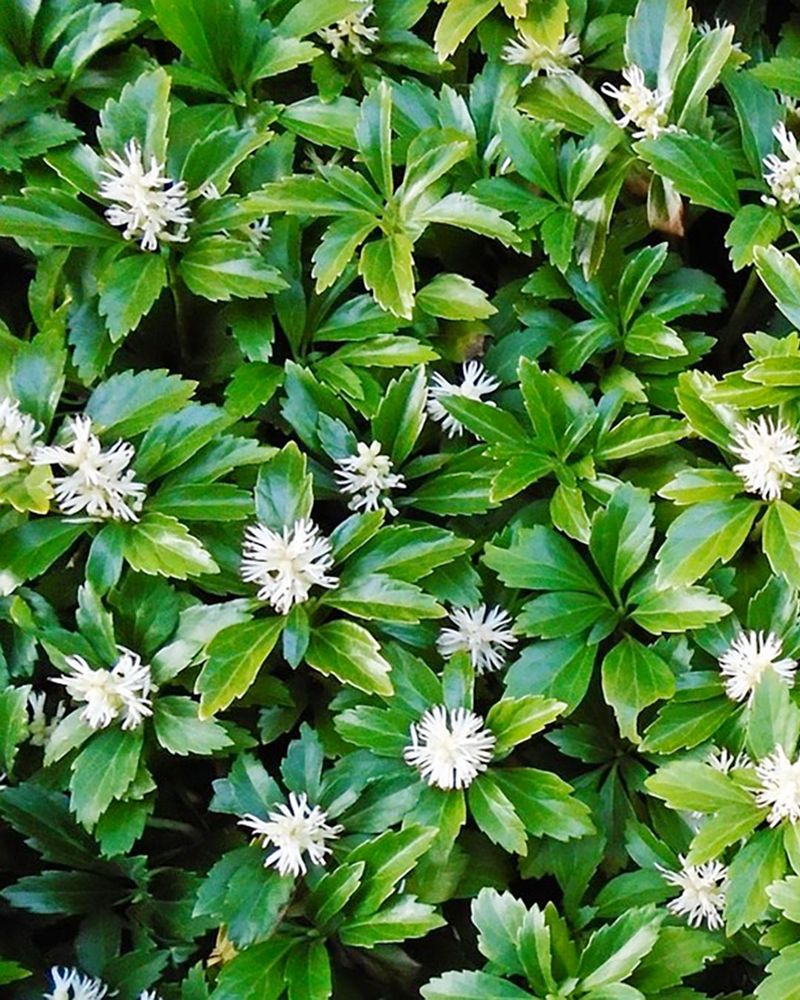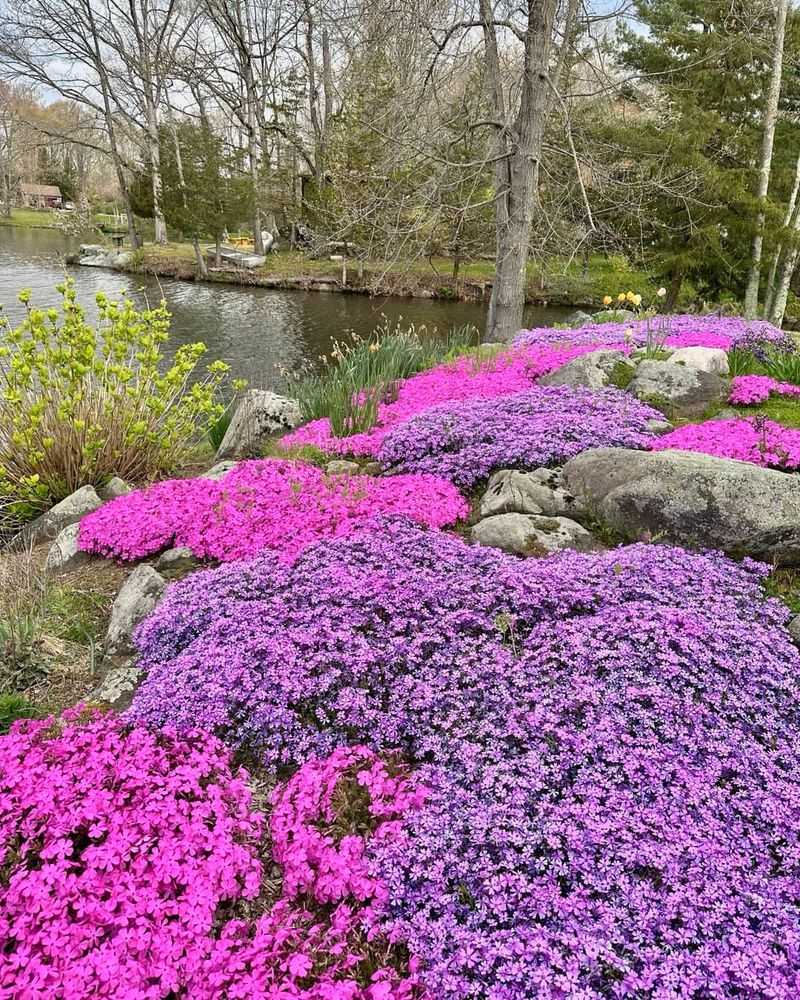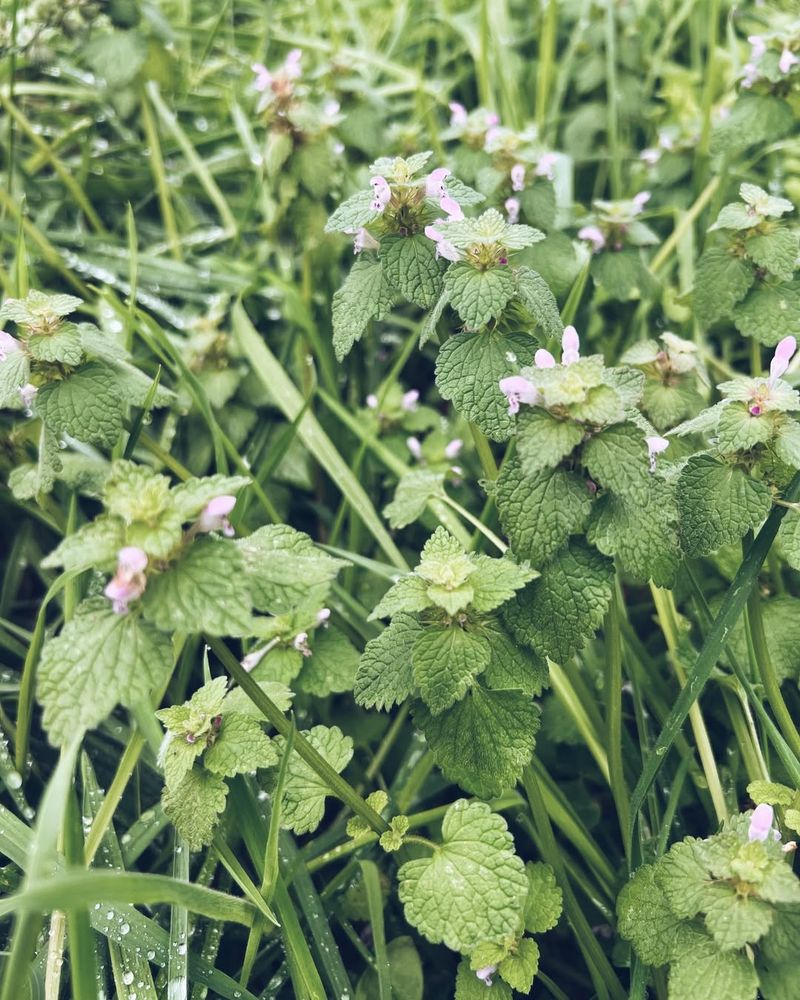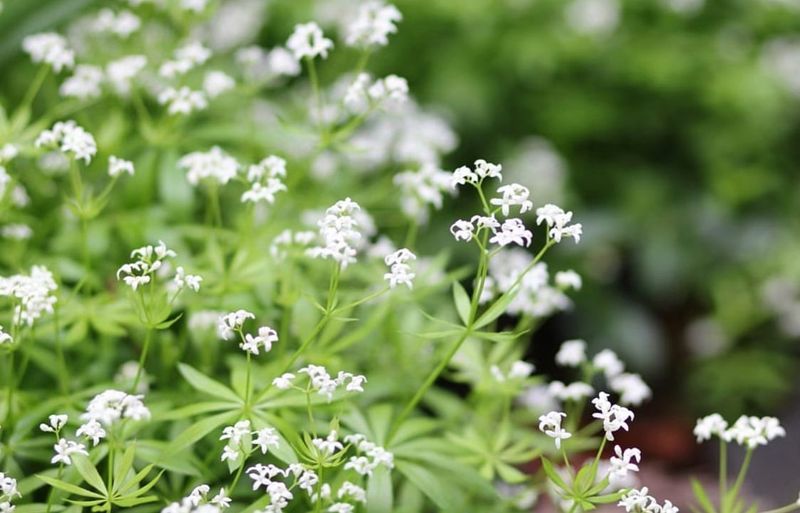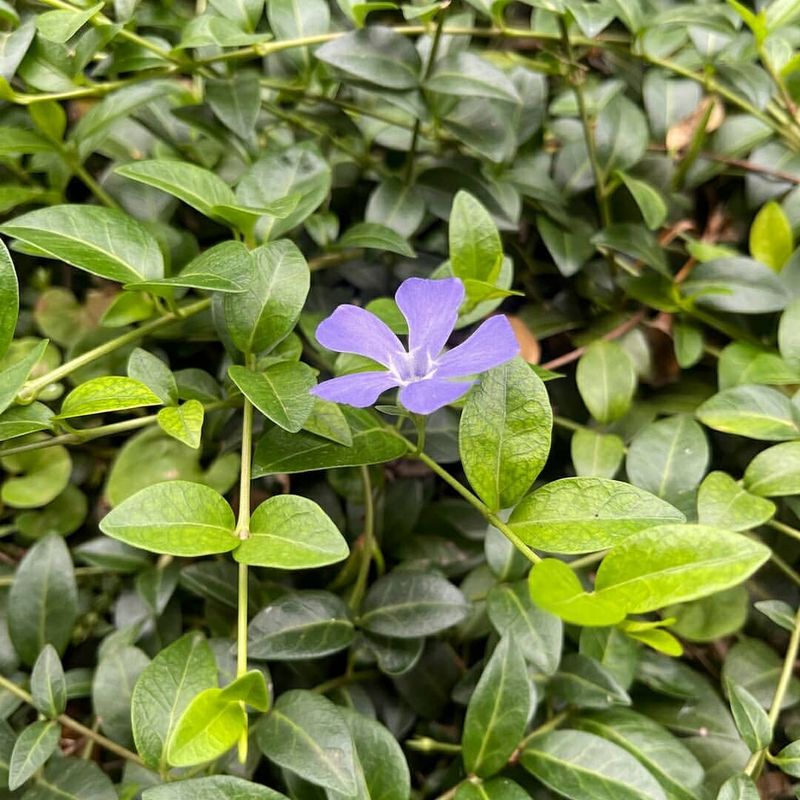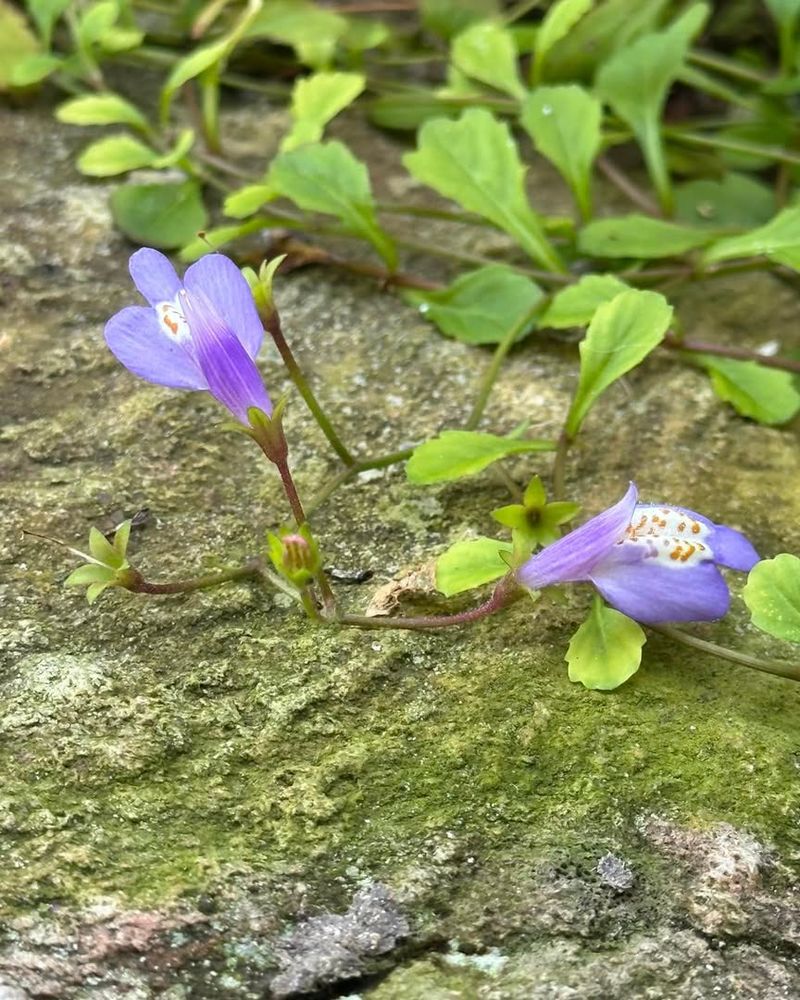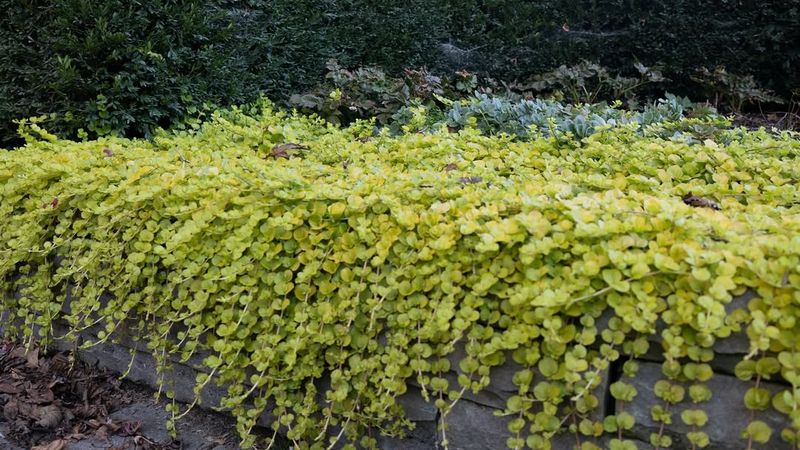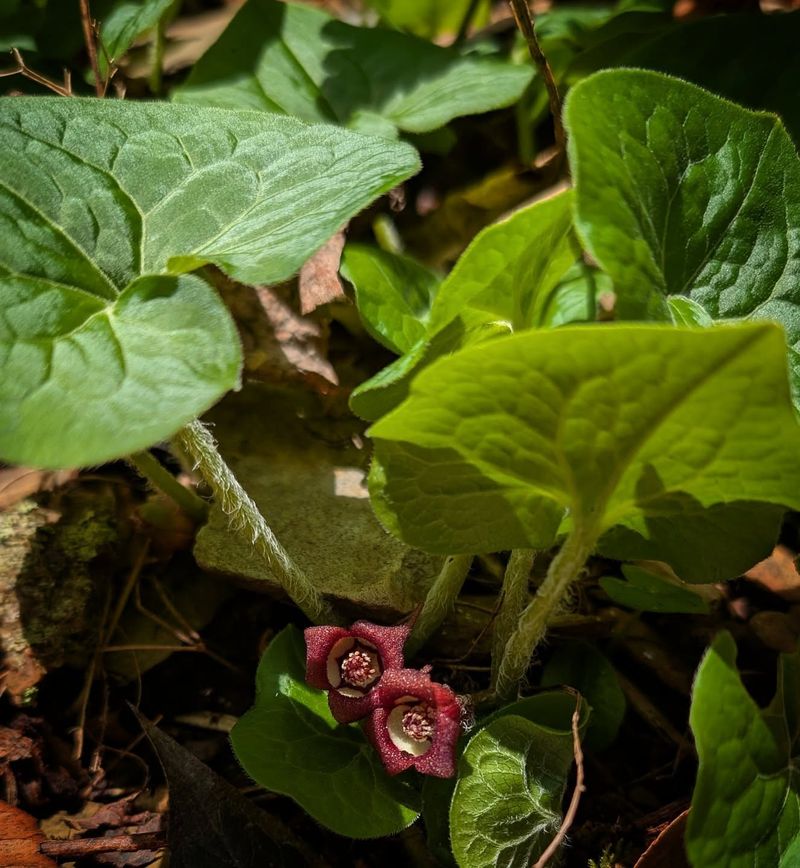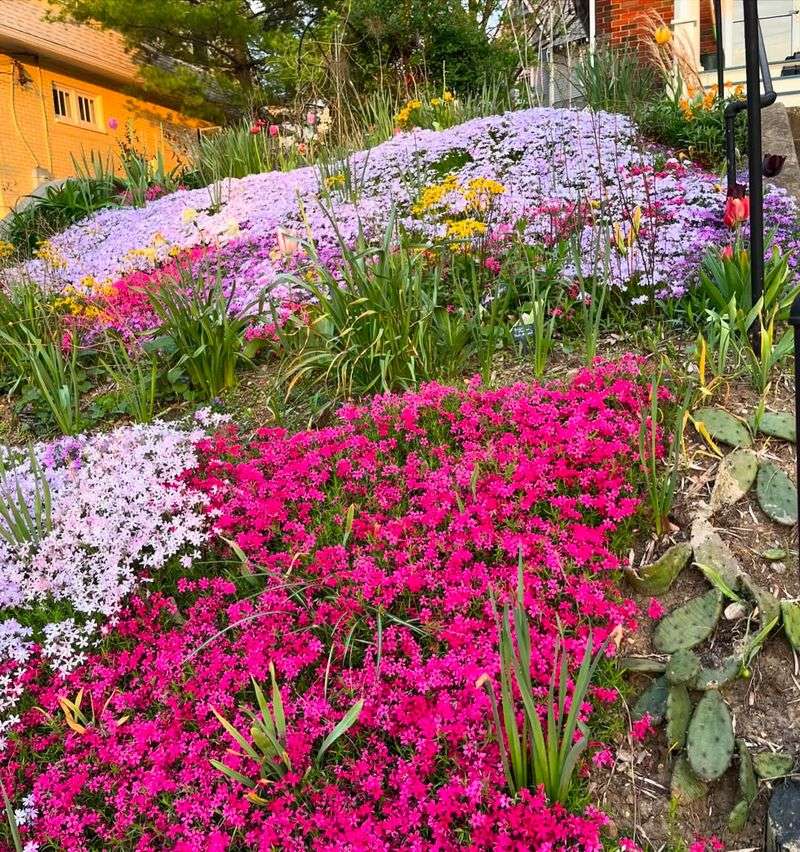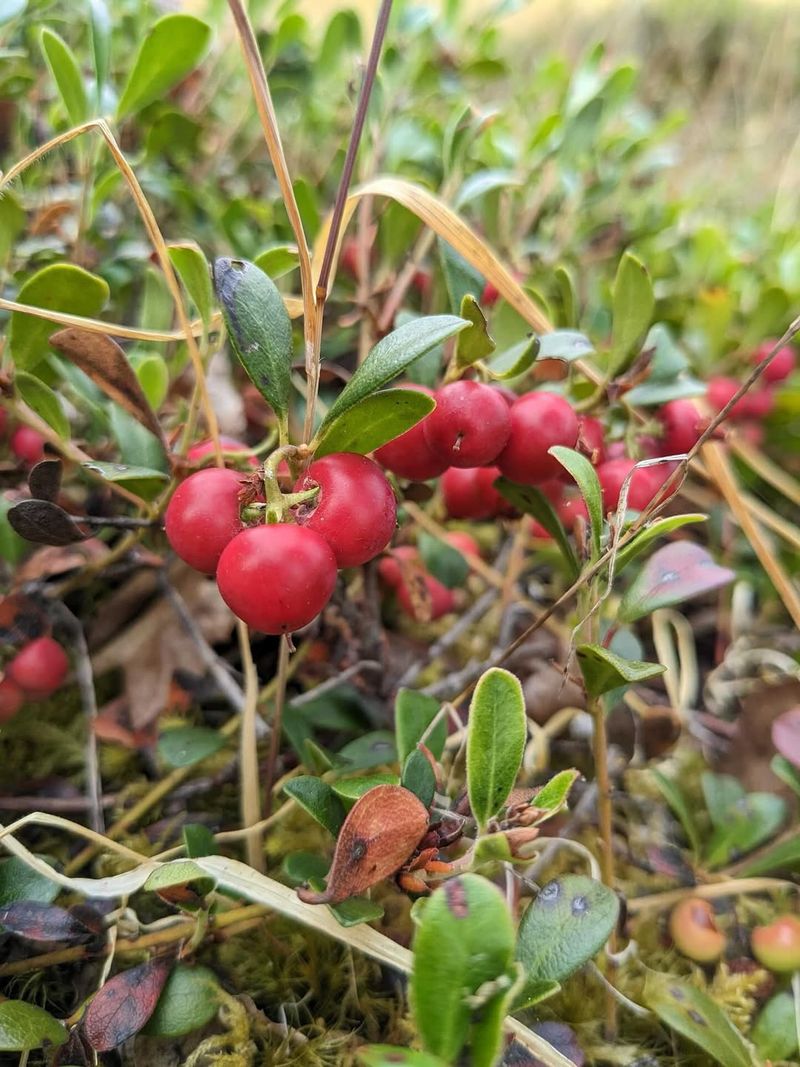Bare patches in your garden can make the whole yard look unfinished and sad. Ground covers are low-growing plants that spread quickly to fill those empty spaces while adding color and texture.
Iowa gardeners love these tough plants because they handle our weather extremes and need very little care once they settle in.
1. Creeping Thyme
Walking across this fragrant herb releases a wonderful scent that fills the air around your garden path. Creeping thyme grows only a few inches tall and spreads into a thick mat covered with tiny purple, pink, or white flowers in summer.
Iowa’s hot summers don’t bother it one bit. Plant it between stepping stones or let it cascade over walls for a cottage garden look that attracts butterflies and bees to your yard.
2. Sedum (Stonecrop)
Succulent leaves store water like tiny reservoirs, making sedum incredibly drought-tolerant once established in your garden beds. Dozens of varieties exist with foliage ranging from lime green to deep burgundy, providing year-round visual interest.
Plant it in those dry, sunny spots where nothing else seems to grow. The fleshy leaves form tight carpets that choke out weeds while requiring almost zero maintenance from busy gardeners.
3. Ajuga (Bugleweed)
Glossy leaves in shades of bronze, purple, and green create a stunning tapestry beneath trees where grass struggles to survive. Come spring, tall spikes of blue flowers rise above the foliage like tiny candles lighting up shady corners.
Ajuga spreads through runners and fills in quickly, even tolerating the occasional footstep. Iowa gardeners appreciate how it stays evergreen through mild winters, providing color when most plants have gone dormant.
4. Pachysandra
Dense whorls of glossy green leaves create a forest floor effect that looks professionally designed with minimal effort from you. Growing about six to eight inches tall, pachysandra forms such thick growth that weeds simply give up trying to compete.
Shady areas under mature trees become lush green carpets that stay attractive from spring through fall. Water it regularly during the first season, then watch it thrive with little attention for years to come.
5. Creeping Phlox
Imagine a waterfall of flowers cascading down a slope in brilliant pink, purple, white, or red each spring. Needle-like evergreen foliage provides structure during winter, then disappears beneath masses of blooms when warm weather arrives.
Slopes and rock gardens become showstoppers with this easy spreader that laughs at poor soil. Butterflies flock to the nectar-rich flowers while you enjoy a maintenance-free display that returns bigger and better every year.
6. Lamium (Dead Nettle)
Silver-splashed leaves brighten dark corners like natural spotlights, solving that problem area where nothing colorful seems to grow. Hooded flowers in pink, purple, or white add extra charm throughout the growing season without any deadheading required.
Despite the unfortunate common name, lamium won’t sting and spreads at a manageable pace. Iowa shade gardeners treasure its ability to thrive under trees and shrubs while maintaining attractive foliage all season long.
7. Sweet Woodruff
Whorls of delicate leaves and tiny white star-shaped flowers create an enchanted woodland atmosphere in shady spots. When dried, the foliage releases a sweet vanilla-like scent that makes it popular for potpourri and sachets.
Plant it beneath hostas and ferns for a layered shade garden that looks professionally designed. Sweet woodruff spreads steadily without becoming aggressive, filling bare ground while playing nicely with neighboring plants in your Iowa garden beds.
8. Periwinkle (Vinca Minor)
Glossy evergreen leaves and periwinkle-blue flowers make this classic ground cover a favorite for generations of Iowa gardeners. Trailing stems root wherever they touch soil, creating an ever-expanding mat that suppresses weeds effectively.
Banks and slopes become stabilized with its spreading root system while bare spots disappear under the glossy foliage. Choose this reliable performer for areas where you want permanent, low-maintenance coverage that looks good year after year.
9. Mazus
Tiny orchid-like flowers in purple or white cover this low-growing spreader from late spring through summer, creating a living carpet. Growing only two inches tall, mazus tolerates light foot traffic and fills cracks between pavers beautifully.
Moist areas that stay damp become colorful displays instead of muddy eyesores. Iowa gardeners use it near downspouts and in rain gardens where its water-loving nature becomes an asset rather than a problem requiring constant attention.
10. Creeping Jenny (Lysimachia)
Bright chartreuse leaves glow like sunshine even in shady spots, bringing much-needed light to dark garden corners. Stems trail and root quickly, making this fast spreader perfect for covering bare ground in record time.
Container edges get a beautiful cascading effect when you add creeping Jenny as a thriller-spiller combination. Just keep an eye on it because this enthusiastic grower can become too successful in ideal conditions, though it pulls out easily if needed.
11. Wild Ginger
Heart-shaped leaves create a lush groundcover reminiscent of tropical forests, yet this native plant thrives in Iowa’s challenging climate. Hidden beneath the foliage, curious burgundy flowers bloom at ground level, attracting early-season pollinators.
Woodland gardens gain authentic native character with this slow but steady spreader. Wild ginger pairs beautifully with ferns and spring ephemerals, creating natural-looking plant communities that require minimal watering once established in shady areas.
12. Moss Phlox
Rock gardens and sunny slopes transform into vibrant quilts of color when moss phlox blooms in spring. Needle-like evergreen foliage hugs the ground tightly, then erupts with flowers so abundant you can barely see the leaves beneath.
Poor, rocky soil that frustrates other plants becomes the perfect home for this tough character. Iowa gardeners love how it handles drought, heat, and cold while asking for absolutely nothing in return except occasional trimming after flowering.
13. Bearberry (Kinnikinnick)
Glossy evergreen leaves turn bronze in winter, providing year-round interest in areas where seasonal color usually disappears. Small white or pink bell-shaped flowers give way to bright red berries that birds adore during fall and winter months.
Native to North America, bearberry handles Iowa’s temperature swings with ease while preferring acidic, sandy soils. Slopes and banks benefit from its deep root system that prevents erosion while creating attractive, naturalized plantings.

